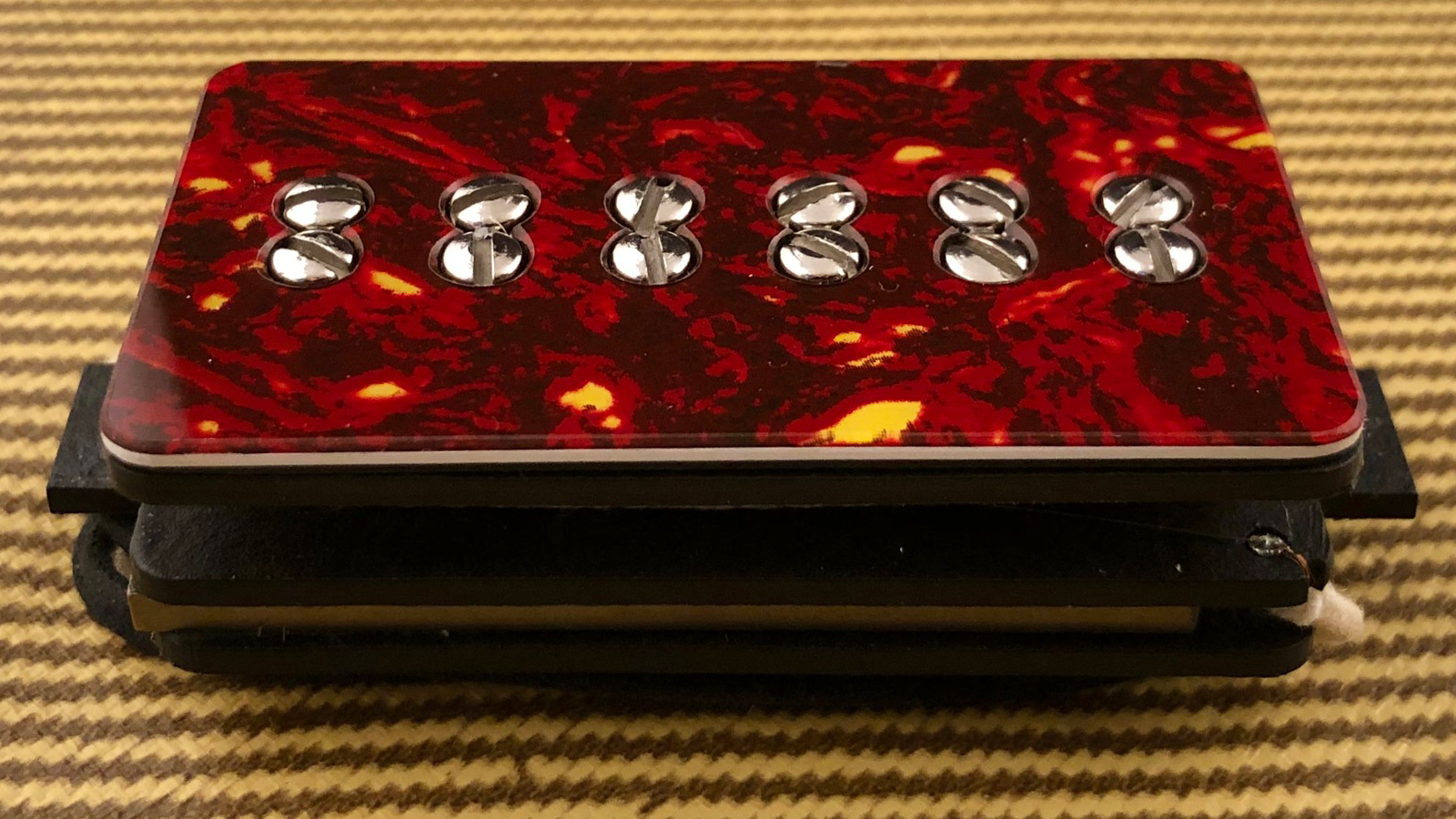GuitarPlayer Verdict
Great pickups. Deliver on the qualities that have made vintage P-90s so lusted after for so many years
Pros
- +
Cleverly designed
- +
Nails that elusive P-90 tone with a little something extra
Cons
- -
None
You can trust Guitar Player.
The promise of an authentic-sounding P-90 in a humbucker-sized mounting has been afloat for many years now, with several prominent pickup makers throwing their hats into the ring. I’ve played plenty of them, and while many sound pretty good, I’ve never thought any quite got there.
So it’s all the more impressive that a boutique winder from the seacoast region of New Hampshire and southern Maine cracked the code so effectively – and that he did it by applying such an alternative approach to the problem.
The crux of the problem is that the shape of any pickup’s coil plays a huge part in forming its voice, and you simply can’t fit the same coil within the footprint of two differently shaped pickups. As a result, something has to be done differently.

Scott Miller of Stonewall Pickups has been winning plenty of fans in his part of New England since moving his focus from guitar repair to full-time pickup manufacturing about 10 years ago, and his reputation has traveled further afield more recently, while he has shifted from reproductions to more original designs.
Outwardly, we might expect his Slutty Wolf H90 pickups to look much like other humbucker-sized P-90s. But they very much do not. Rather than traditional covers, they have integral decorative top plates (available in a wide variety of materials and colors, although we’re partial to the tortoiseshell on the review set).
But perhaps more dramatically they have two pole pieces per string, for a total of 12. These are resolutely still single-coil units, but the double poles (hit upon after much R&D) enabled a widening of the coil to more authentic P-90-like specs.

While Miller doesn’t disclose the wire he uses for each design, he did say, “Because most of my new designs don’t fit in traditional covers, I can actually make the bobbins bigger and end up using much thicker wire gauges.”
All the latest guitar news, interviews, lessons, reviews, deals and more, direct to your inbox!
There are two Alnico V bar magnets in the bridge position (which reads 7.77k ohms), and a mix of Alnico II and III in the neck (6.67k ohms). The pair is RWRP for a hum-canceling middle position.
Tested in an Epiphone Les Paul Traditional Pro supplied by Miller, through a Carr Super Bee 1x10 combo and a Friedman Dirty Shirley Mini tube amp head and 2x12 cab, the Slutty Wolf H90s sounded nothing short of spectacular.
That beloved grit and bite is all there, couched in an impressive blend of articulation and girth
Rather than the bovine mud delivered by so many contemporary P-90s (whether standard or H-sized), this set nailed an authentically vintage-inspired voice, yet arguably with a little more of everything we’ve come to love in the original Gibson units of the ’50s and early ’60s.
That beloved grit and bite is all there, couched in an impressive blend of articulation and girth, plus the seemingly impossible combination of tight, edgy attack and succulent compression that great vintage pickups seem to achieve in the pick feel.
Add it all up, and the Slutty Wolf H90s deliver on the qualities that have made vintage P-90s so lusted after for so many years, characteristics that have long made them some of the most expressive pickups available.

Some of the hidden delights include a slightly Fender-ish glassiness that isn’t found in many contemporary P-90s, enough power to drive an amp’s front end without crushing it into midrangey sludge, and a surprisingly PAF-like harmonic complexity that sings sweetly through both clean settings and overdrive.
They will rock out, for sure, and I immensely enjoyed them with the Friedman cranked for Plexi-like crunch or with a TS9 or a JHS Angry Charlie into either amp.
But they also delivered lush clean tones that evade many P-90s, with lots of appealing chime and sparkle. Great sounds, great pickups and a set worthy of an Editors’ Pick Award.

Specifications:
- MAGNETS: Alnico V bridge, Alnico II and III neck
- DC RESISTANCE: 6.67kΩ neck, 7.77kΩ bridge
- BUILT: USA
Visit Stonewall Pickups for more information.
Dave Hunter is a writer and consulting editor for Guitar Player magazine. His prolific output as author includes Fender 75 Years, The Guitar Amp Handbook, The British Amp Invasion, Ultimate Star Guitars, Guitar Effects Pedals, The Guitar Pickup Handbook, The Fender Telecaster and several other titles. Hunter is a former editor of The Guitar Magazine (UK), and a contributor to Vintage Guitar, Premier Guitar, The Connoisseur and other publications. A contributing essayist to the United States Library of Congress National Recording Preservation Board’s Permanent Archive, he lives in Kittery, ME, with his wife and their two children and fronts the bands A Different Engine and The Stereo Field.


